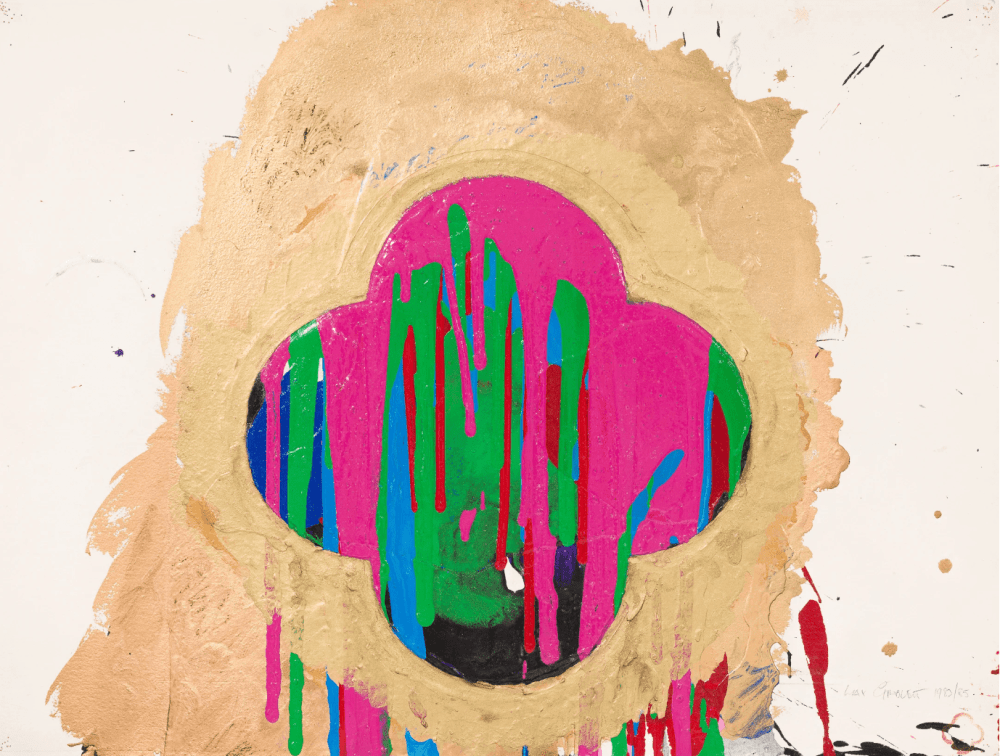
The title of the exhibition also addresses the geographical distance between the United States and Aotearoa, and the experience of both physically and psychically navigating between these two places. Perhaps on a more subdued note, this modest idiom might also act as an acknowledgement of privilege and a reminder to practice empathy in these turbulent times; to reserve judgment of those on the other side of the river who may be facing unknown loss, hardship, or persecution.
Max Gimblett (b.1935, Auckland Tāmaki Makaurau) has been primarily based in New York since 1972. Gimblett’s practice encompasses a complex synthesis of influences as varied as Abstract Expressionism, Modernism, Eastern and Western spirituality, Jungian psychology, and ancient cultures. Gimblett explores the multiplicity of meaning attached to revered objects and symbols, in particular the quatrefoil, which dates to pre-Christian times and is found in both Western and Eastern religions through forms such as the rose window, mandala, cross, and lotus. Gimblett steps further into the realm of the sacred with his use of precious metals; with gold and silver religiously associated with honour, wisdom, and spiritual enlightenment.
The Getty Research Institute Collection recently acquired an anthology of over 250 of Gimblett’s artist books — containing writings, drawings, collages, notes, quotes, and calculations — gifted by the artist and his wife, scholar, and curator Barbara Kirshenblatt-Gimblett. His work has been exhibited extensively and is held in significant public and private collections internationally and in Aotearoa. Major solo exhibitions include Ocean Wheel, Christchurch Art Gallery Te Puna o Waiwhetū, Christchurch (2020); The Art of Remembrance, Museum of New Zealand Te Papa Tongarewa, Wellington Te Whanganui-a-Tara (2016); The Word of God: The Sound of One Hand, Andy Warhol Museum, Pittsburgh, USA (2011); and The Brush of All Things, City Gallery Wellington Te Whare Toi, Wellington Te Whanganui-a-Tara (2005).